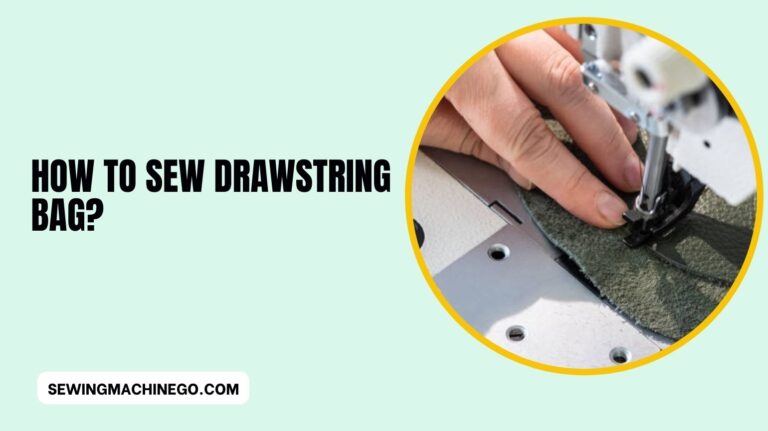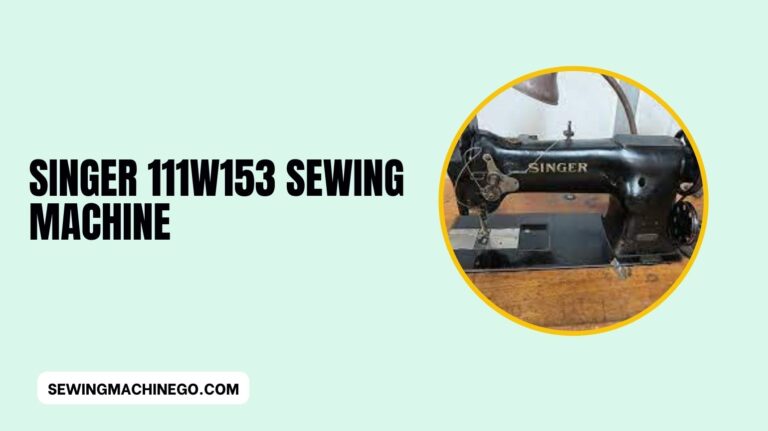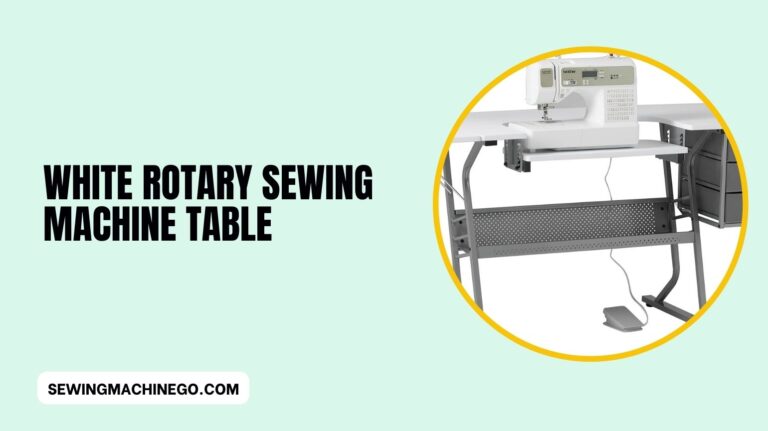How to Store a Sewing Machine? (Easy Guide) In 2024
How to Store a Sewing Machine? Are you looking to store your sewing machine properly to ensure its longevity and keep it in top working condition?
Whether you’re a professional seamstress or a hobbyist, proper sewing machine storage is essential to maintain its performance and prevent damage.
In this guide, we’ll walk you through the steps of storing your sewing machine safely and effectively.

How to Store a Sewing Machine?
Storing a sewing machine properly involves more than simply placing it in a corner of your house.
Neglecting the right storage practices can lead to dust accumulation, moisture damage, and even mechanical issues. To keep your sewing machine in prime condition, follow these steps.
Gathering Supplies
Before you start storing your sewing machine, gather the necessary supplies. You’ll need a soft, clean cloth, a screwdriver, a small brush, and sewing machine oil.
Cleaning and Maintenance
Thoroughly clean your sewing machine using a soft cloth and brush. Remove dust, lint, and any debris from the surface and crevices.
Once clean, apply a drop of sewing machine oil to lubricate the moving parts as per the manufacturer’s instructions.
Removing Accessories
Detach any removable accessories such as needles, presser feet, and bobbins. Store them separately in small containers or bags to prevent loss or damage.
Securing Moving Parts
If your sewing machine has a presser foot lever or needle, make sure they are in the down position.
This prevents tension on the internal springs and mechanisms, reducing the risk of damage during storage.
Choosing the Right Location
Find a suitable storage spot that is dry, cool, and away from direct sunlight. Extreme temperatures and humidity can adversely affect your sewing machine’s electronic components and lubrication.
Covering Your Sewing Machine
Use a dust cover or a clean, lightweight fabric to protect your sewing machine from dust and potential scratches. Ensure the cover fits well without putting pressure on any buttons or levers.
Storage Containers
If you’re storing your sewing machine in a box, choose one that’s sturdy and provides ample cushioning. Ensure the box is clean and dry before placing the machine inside.
Protective Padding
To add an extra layer of protection, place padding at the bottom of the storage container. This helps absorb any shocks and vibrations that might occur during transportation or storage.
Temperature and Humidity Control
Consider using moisture-absorbing packets or silica gel inside the storage container to maintain an optimal level of humidity. Fluctuations in humidity can lead to rust and corrosion.
Long-Term Storage
If you plan to store your sewing machine for an extended period, it’s a good idea to run a few stitches on scrap fabric before using it again.
This helps ensure that any residual oil or dust is worked out before sewing on your precious projects.
Regular Inspection
Even in storage, perform periodic checks to make sure your sewing machine is still in good condition.
Look for signs of pest infestations, dust accumulation, or any changes that might require attention.
Troubleshooting Before Use
Before you start sewing after a period of storage, give your machine a quick visual inspection. Check the threading, needle, and bobbin area to ensure everything is in its proper place.
Properly storing a sewing machine is important to ensure it remains in good working condition and lasts for many years. Here are some steps and tips for safely storing a sewing machine:
- Clean the Machine:
- Start by cleaning your sewing machine. Remove any dust, lint, or thread remnants from the machine’s surface and internal components. Use a small brush, compressed air, or a vacuum cleaner with a nozzle attachment to clean hard-to-reach areas.
- Remove the Needle and Presser Foot:
- Take out the sewing machine needle and the presser foot. This will prevent them from becoming damaged during storage.
- Empty the Bobbin and Bobbin Case:
- Remove the bobbin and bobbin case. Clean any lint or thread from the bobbin area. If your machine has a drop-in bobbin, ensure that there is no debris inside the bobbin case area.
- Oil the Machine (if necessary):
- Refer to your sewing machine’s manual for guidance on oiling. Some machines require periodic lubrication, while others are designed to be oil-free. If oiling is required, follow the manual’s instructions.
- Protect the Machine:
- Cover your sewing machine with a dust cover or a soft cloth to keep it free from dust and dirt. If you have the original hard case, use it for added protection.
- Store in a Cool, Dry Place:
- Choose a storage location that is cool, dry, and away from direct sunlight. Extreme temperatures and humidity can damage the machine over time.
- Elevate the Machine:
- If possible, store the machine on a shelf or table, rather than directly on the floor. Elevating it can help protect it from accidental kicks or moisture.
- Keep the Manual Handy:
- Store the sewing machine’s manual and any accessories in a safe place, so you can easily find them when you need to use the machine again.
- Periodic Maintenance:
- It’s a good practice to periodically check on your stored sewing machine. Every few months, uncover it, turn it on, and manually rotate the handwheel a few times to keep the internal parts from seizing up.
- Avoid Covering with Plastic:
- Avoid covering your sewing machine with plastic or a plastic bag, as it can trap moisture and potentially cause rust or other damage. Use a breathable fabric cover instead.
By following these steps, you can ensure that your sewing machine is properly stored and ready for use whenever you need it.
Remember that the specific maintenance and storage instructions may vary depending on your sewing machine’s brand and model, so always refer to the manufacturer’s manual for the most accurate guidance.
People also ask
How do you store a sewing machine when not in use?
When not in use, follow these steps to store your sewing machine properly:
Clean: Wipe off dust and debris with a soft cloth and brush.
Remove Accessories: Take out needles, presser feet, and bobbins.
Secure Parts: Lower presser foot and needle to release tension.
Cover: Use a dust cover or fabric to shield from dust.
Dry Spot: Store in a cool, dry place away from sunlight.
Box Option: Use a sturdy box with padding if preferred.
Humidity Control: Add moisture-absorbing packets to avoid rust.
Maintenance: Run a few stitches before using it again.
Check Periodically: Inspect for pests or changes in condition.
Following these steps ensures your sewing machine stays in good condition for its next use.
Should I store my sewing machine with the needle up or down?
It’s best to store your sewing machine with the needle in the down position.
This helps relieve tension on internal parts and reduces the risk of damage during storage.
Can sewing machines be stored in the garage?
Storing sewing machines in a garage isn’t recommended. Garages often have temperature and humidity fluctuations that can potentially harm the machine and its components.
It’s better to choose a controlled indoor environment for storage.
Can sewing machines be left in the cold?
Leaving sewing machines in cold temperatures is not advisable.
Extreme cold can negatively affect the machine’s lubrication and electronic components, potentially leading to damage or malfunction.
It’s recommended to store sewing machines in a dry, controlled environment at room temperature.
Conclusion
In conclusion, properly storing a sewing machine is essential to prolong its lifespan and maintain its functionality.
By following the recommended steps, including cleaning the machine, covering it with a dust cover or plastic bag,
storing it in a dry and cool environment, and ensuring it is not exposed to direct sunlight or extreme temperatures, you can safeguard your sewing machine from potential damage and ensure it’s ready for use when needed.
Taking these simple precautions will help you enjoy years of seamless sewing experiences.

Hi, I am Alice, and I am your perfect guide to the world of sewing machines. With over 10 years of experience in the sewing industry, I am passionate about sharing my knowledge and expertise to help you make the most of your sewing journey. about me






